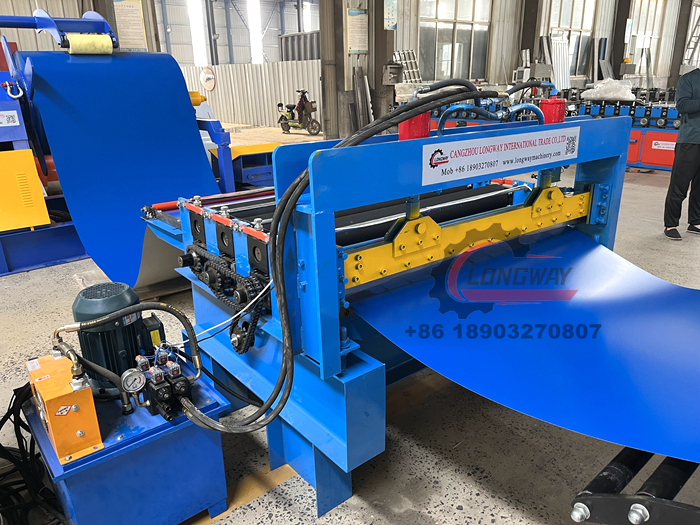purlin rolling machine
Understanding Purlin Rolling Machines Functionality and Applications
Purlin rolling machines are specialized equipment designed to produce purlins, which are structural steel components used in the construction of buildings, particularly in metal structures. These machines cater to the needs of the construction industry by providing the means to create high-quality, precision-engineered purlins that are essential for the stability and integrity of roofs and frames in various structures.
What are Purlins?
Purlins are horizontal beams used in building construction to support the load of the roof deck or sheathing. They play a critical role in the overall framework of a building, ensuring that the roof structure is securely anchored and that loads are evenly distributed. Purlins are typically made from steel due to its strength, durability, and resistance to environmental factors. Different types of purlins include C-purlins, Z-purlins, and U-channels, each serving specific purposes based on structural requirements.
The Functionality of Purlin Rolling Machines
A purlin rolling machine functions by taking flat steel strips or coils and rolling them into the desired purlin shape. The process involves several key stages
1. Coil Preparation The machine starts with the loading of steel coils onto the uncoiler, which provides a continuous supply of flat steel for processing.
2. Forming Process The flat steel is then fed through a series of rollers. These rollers gradually bend and shape the steel into the desired cross-section. Advanced purlin rolling machines use computer-aided design (CAD) to ensure precision and efficiency in the shaping process.
purlin rolling machine

3. Cutting Once the purlin has been formed, it is cut to the required lengths. This step can be automated for higher productivity and consistency.
4. Finishing In some processes, additional treatments, such as galvanization or painting, may be applied to enhance the durability and aesthetics of the purlins.
Alongside these main functions, modern purlin rolling machines are equipped with features such as adjustable roller spacing, programmable control systems, and rapid changeover capabilities, allowing for the production of different purlin sizes and shapes with minimal downtime.
Applications of Purlin Rolling Machines
The applications of purlin rolling machines are vast and varied. They are predominantly used in the construction of commercial and industrial buildings, including warehouses, factories, and shopping centers. The use of steel purlins contributes to faster construction times, reduced labor costs, and improved overall structural integrity.
In addition to commercial buildings, purlins are also used in residential constructions, agricultural buildings such as barns and riding arenas, and in the framework for solar panel installations. The versatility and strength of purlins make them a critical component in many structural systems.
Conclusion
Purlin rolling machines play an indispensable role in modern construction, enabling the efficient production of steel purlins that meet the demanding requirements of various building projects. With advancements in technology, these machines continue to evolve, providing greater precision, speed, and flexibility in manufacturing. As the global demand for efficient and sustainable construction solutions grows, purlin rolling machines will remain central to the industry’s ability to deliver high-quality structures that stand the test of time. Quality purlins, produced by these specialized machines, ensure that both safety and reliability are upheld in the architectural world, contributing significantly to the sturdiness of buildings across various sectors.
-
Roof Panel Machines: Buying Guide, Types, and PricingNewsJul.04, 2025
-
Purlin Machines: Types, Features, and Pricing GuideNewsJul.04, 2025
-
Metal Embossing Machines: Types, Applications, and Buying GuideNewsJul.04, 2025
-
Gutter Machines: Features, Types, and Cost BreakdownNewsJul.04, 2025
-
Cut to Length Line: Overview, Equipment, and Buying GuideNewsJul.04, 2025
-
Auto Stacker: Features, Applications, and Cost BreakdownNewsJul.04, 2025
-
Top Drywall Profile Machine Models for SaleNewsJun.05, 2025








